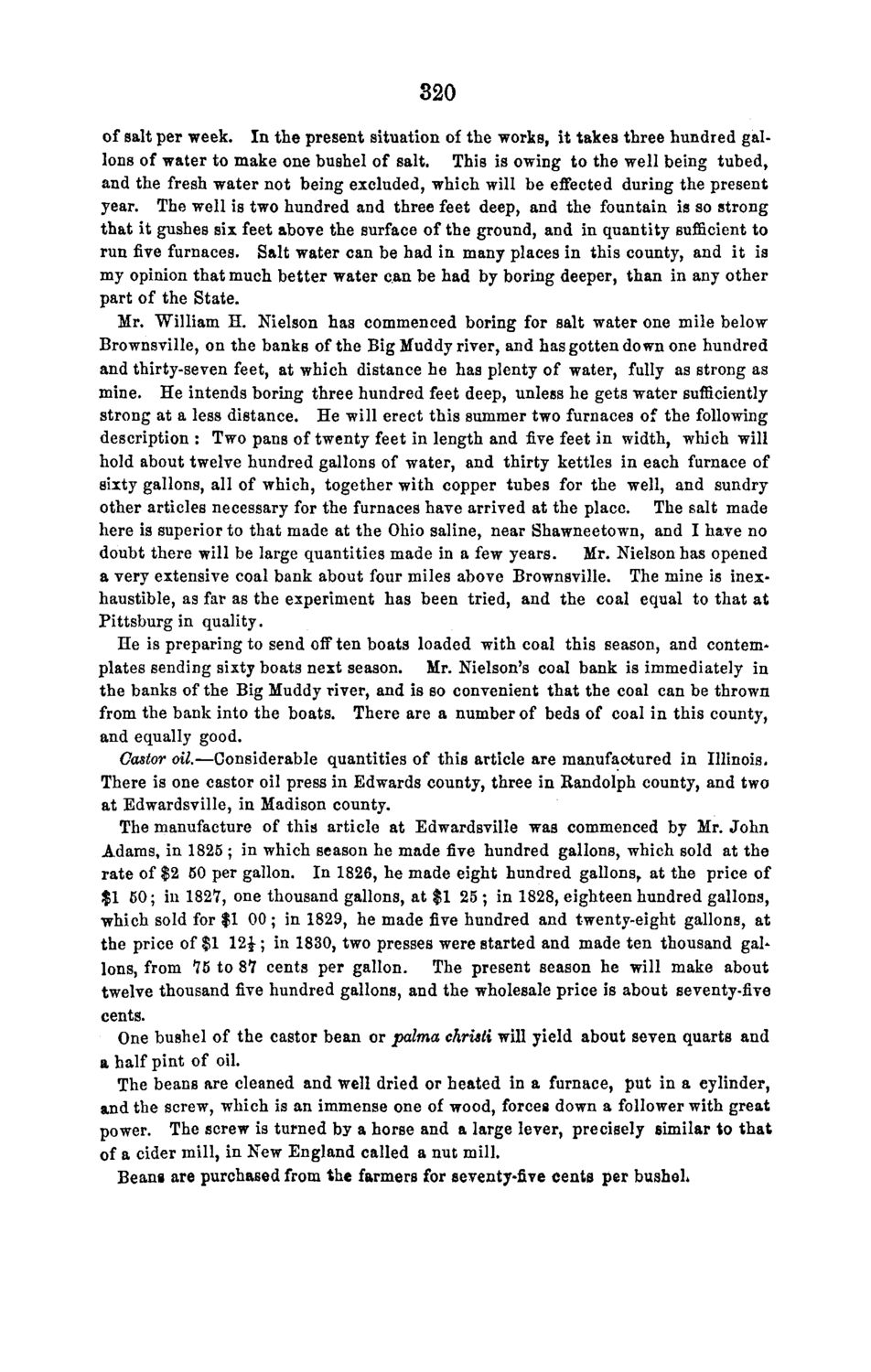| |
| |
Caption: Board of Trustees Minutes - 1868
This is a reduced-resolution page image for fast online browsing.

EXTRACTED TEXT FROM PAGE:
320 of salt per week. In the present situation of the works, it takes three hundred gallons of water to make one bushel of salt. This is owing to the well being tubed, and the fresh water not being excluded, which will be effected during the present year. The well is two hundred and three feet deep, and the fountain is so strong that it gushes six feet above the surface of the ground, and in quantity sufficient to run five furnaces. Salt water can be had in many places in this county, and it is my opinion that much better water can be had by boring deeper, than in any other part of the State. Mr. "William H. Nielson has commenced boring for salt water one mile below Brownsville, on the banks of the Big Muddy river, and has gotten down one hundred and thirty-seven feet, at which distance he has plenty of water, fully as strong as mine. He intends boring three hundred feet deep, unless he gets water sufficiently strong at a less distance. He will erect this summer two furnaces of the following description : Two pans of twenty feet in length and five feet in width, which will hold about twelve hundred gallons of water, and thirty kettles in each furnace of sixty gallons, all of which, together with copper tubes for the well, and sundry other articles necessary for the furnaces have arrived at the place. The salt made here is superior to that made at the Ohio saline, near Shawneetown, and I have no doubt there will be large quantities made in a few years. Mr. Nielson has opened a very extensive coal bank about four miles above Brownsville. The mine is inexhaustible, as far as the experiment has been tried, and the coal equal to that at Pittsburg in quality. He is preparing to send off ten boats loaded with coal this season, and contem* plates sending sixty boats next season. Mr. Nielson's coal bank is immediately in the banks of the Big Muddy river, and is so convenient that the coal can be thrown from the bank into the boats. There are a number of beds of coal in this county, and equally good. Castor oil.—Considerable quantities of this article are manufactured in Illinois. There is one castor oil press in Edwards county, three in Randolph county, and two at Edwardsville, in Madison county. The manufacture of this article at Edwardsville was commenced by Mr. John Adams, in 1825 ; in which season he made five hundred gallons, which sold at the rate of $2 50 per gallon. In 1826, he made eight hundred gallons, at the price of $1 50; in 1827, one thousand gallons, at $1 25 ; in 1828, eighteen hundred gallons, which sold for $1 00; in 1829, he made five hundred and twenty-eight gallons, at the price of %l 12£ ; in 1830, two presses were started and made ten thousand gallons, from *75 to 8*7 cents per gallon. The present season he will make about twelve thousand five hundred gallons, and the wholesale price is about seventy-five cents. One bushel of the castor bean or palma christi will yield about seven quarts and a half pint of oil. The beans are cleaned and well dried or heated in a furnace, put in a cylinder, and the screw, which is an immense one of wood, forces down a follower with great power. The screw is turned by a horse and a large lever, precisely similar to that of a cider mill, in New England called a nut mill. Beans are purchased from the farmers for seventy-five cents per busheL
| |